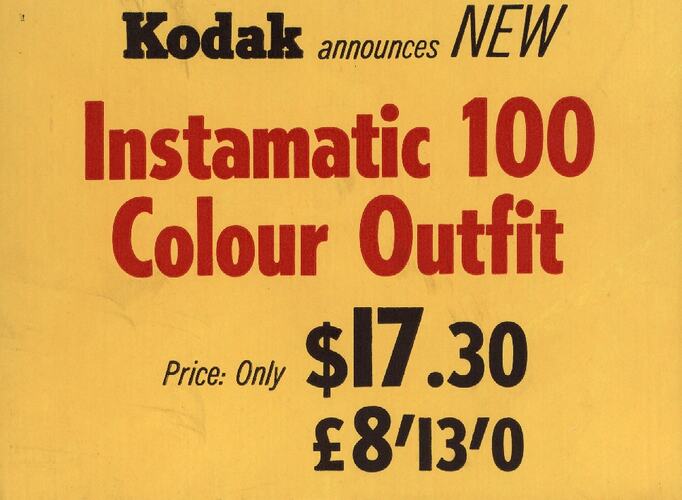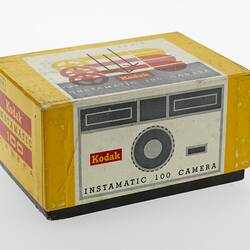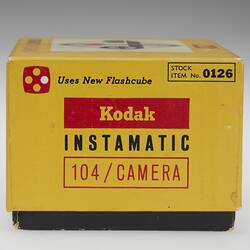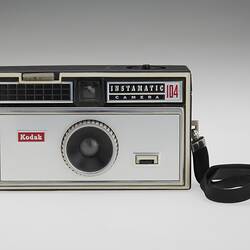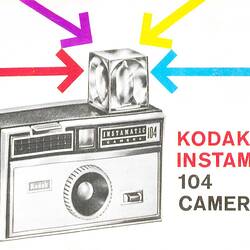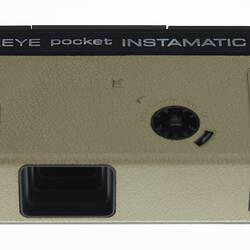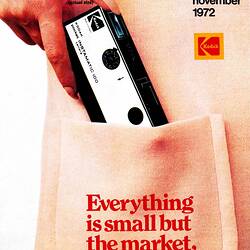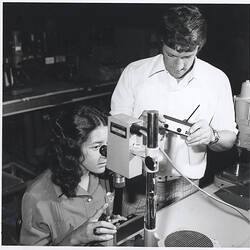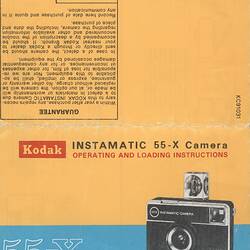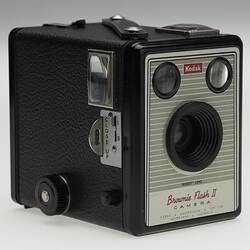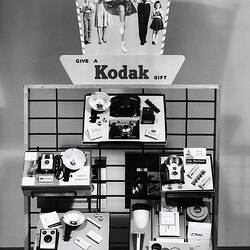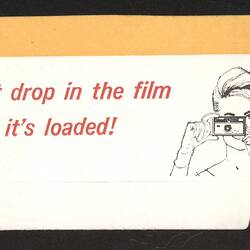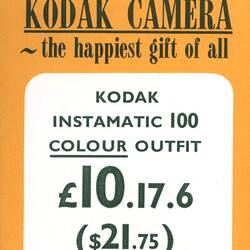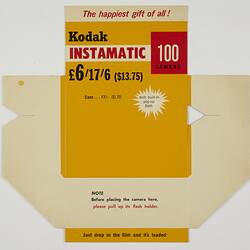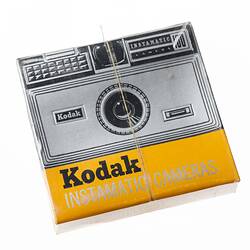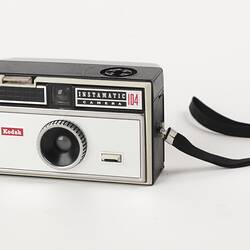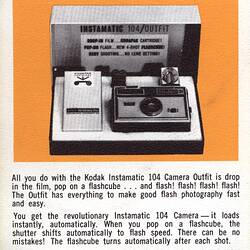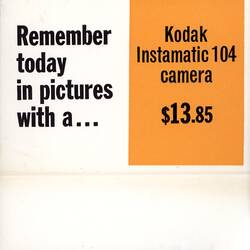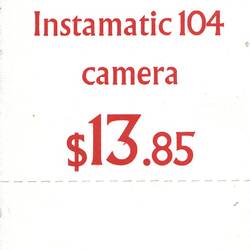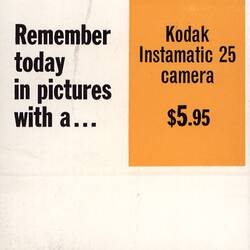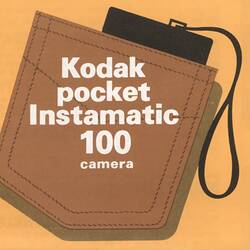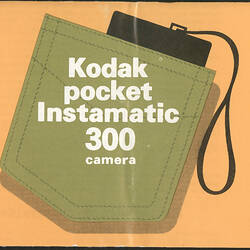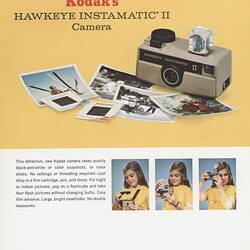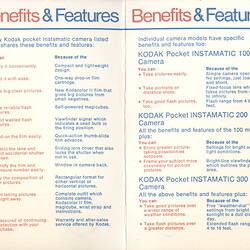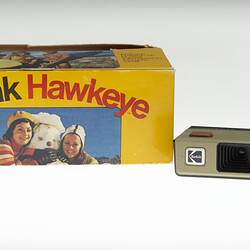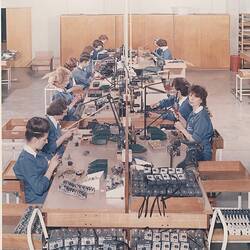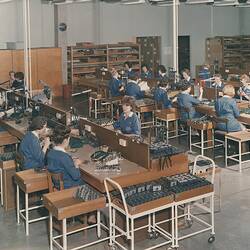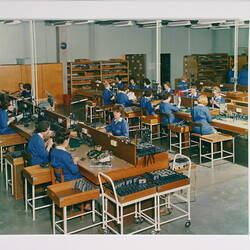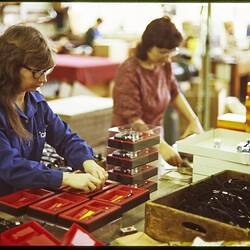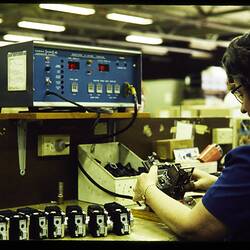The popular Kodak Instamatic camera range was launched in 1963. The small and compact Instamatics had a huge impact on amateur photography, as they were inexpensive, easy to use and loading the camera with film was fast and easy - users only had to drop a film cartridge (126 format) into the back of the camera. The camera came with flash for indoor and night photography, and took colour and black & white print film as well as colour slide film. By 1970, 50 million Instamatics had been made worldwide, bringing cheap, modern photography to the masses, and some of these were made in the Kodak Australasia factory in Coburg, Australia.
There was a wide range of Instamatic cameras, ranging in price in Australia during the 1960s from just $5.95 to over $100. Some were inexpensive, simple aim-and-shoot type cameras with no control settings while others were more costly and had a choice of settings, automatic 'electric-eye' exposure control, automatic focus, automatic flash, higher quality lenses and other features such as telephoto lenses.
The first Instamatic model made was the Instamatic 50 which was released in February 1963 by Kodak Limited in England, and about a month later the Instamatic 100 was issued by Eastman Kodak in the USA. In the same year, Instamatics were also produced in Melbourne by Kodak Australasia for the local Australia and New Zealand market, and by other Kodak subsidiaries around the world.
Kodak Australasia went on to make numerous types of Instamatics over the next two decades. The cameras were assembled from a mix of imported and locally made components in the Camera, Reels and Sundries Department, in Building 15 at Kodak Australasia's new factory in Coburg. In the first wave of Instamatic production starting in 1963, Kodak Australasia assembled the Instamatic 100, as well as the Instamatic 50 and then in 1965 began making Instamatic 104 models.
In early 1974, the Pocket Instamatic range went into production at the Coburg factory. They were a new smaller version of the Instamatic camera that used a smaller film cartridge, the 110, and were designed to fit into a pocket. Kodak Australasia made the Pocket Instamatic 100, 200 and 300 models for distribution to the local markets, assembling the cameras from parts imported from Kodak Limited in England.
The Australian made Pocket Instamatic range was issued more than a year after the range was first released internationally, because a whole new assembly line had to be designed. Assembly for a Pocket Instamatic 100 was made up of 76 individual operations, and there were even more steps for the other camera models. Project engineer Stan Keleher travelled to England to study the complex assembly process before setting up the Australian system. New assembly line tooling was developed and a plastic injection moulding machine valued at over $50,000 was installed. Once the new assembly line was established and was at full production, a team of 25 staff made several hundred Pocket Instamatic cameras a day. Various improvements were implemented for the Australian model. In 1977 a new Pocket Instamatic model, the 92, began production.
The X-Series Instamatic models also began to be assembled at Coburg in 1977, including the 56-X, 76-X, 177-X and 277-X. The X-Series Instamatic was a new version of the Instamatic camera range introduced in 1970, that used the type-X Magicube flash, hence the name. Magicubes were slightly larger than conventional flashcubes and operated with self-powered flash technology, doing away with the need for batteries. They just clicked easily onto the top of the camera and a warning message popped up in the view-finder if a used bulb was in the picture-taking position.
By circa 1981 camera manufacture and assembly in Australia had stopped, as it was not financially viable there compared to Kodak's international manufacturing plants, and competition from Japanese made cameras had started to put a squeeze on profits for Kodak globally. After almost 20 years, locally made Instamatics came to an end for Kodak Australasia.
References
Australian Kodakery, No. 17, Mar-Apr 1970, p.1.
Kodak Sales News, Mar-Apr 1971.
Kodak Sales News, Nov 1972.
Australian Kodakery, No 41, Dec 1972.
Kodak Sales News, Mar 1973.
Australian Kodakery, No. 50, Feb / Mar 1974, p.5.
Australian Kodakery, No. 82, Sep 1977, pps. 1, 3.
Kodak Heritage Collection Volunteer Team, composed of former Kodak engineering department and related staff, who documented key points in Kodak's camera production history.
More Information
-
Keywords
-
Authors
-
Article types
